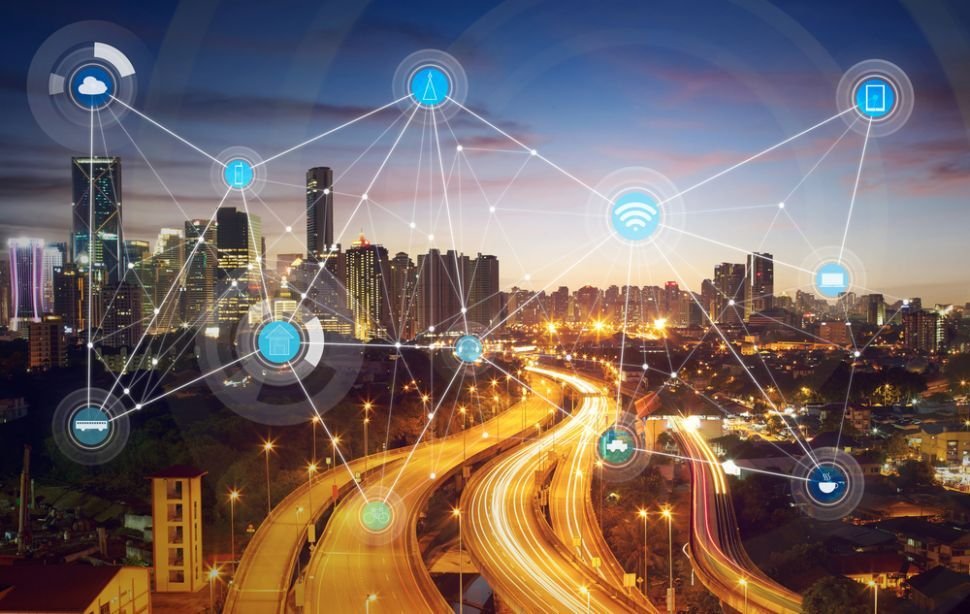

Autonomous driving technology is poised to transform the way we travel with safer and more efficient transportation. However, the current architecture of the vehicle does not support the artificial intelligence software required to make this technology a reality. Today, a vehicle's software functions are driven by dozens of electronic control units, called ECUs, that are distributed throughout the car. Each is specialized: one unit controls the windows and another the door locks, for example, and others control the power steering and braking. Centralizing and unifying the in-car computing architecture will make it easier to integrate and update advanced software features for autonomous and automated driving as they are developed. Like a smartphone, which regularly receives software updates, these software-defined vehicles will be machines that can be continually updated. This architecture not only accelerates technology development, but is also behind the biggest business model transformation the industry has ever seen. By implementing a new and scalable vehicle IT architecture built around high-performance computers, automakers can take full advantage of this new technology and develop a loyal installed base. When entire fleets of vehicles are supported by teams of AI experts and software engineers delivering advanced features to continually improve the driving experience, the opportunities to delight customers are endless. New features, new capabilities and new business models go hand in hand, benefiting consumers and the industry. Legendary global automaker Mercedes-Benz will be one of the first automakers to take advantage of this new architecture, deploying a scalable software-defined fleet built on NVIDIA DRIVE AGX Orin from production in 2024.
Update expectations
Once a customer rolls a new car off the dealer's lot, they rarely continue to interact with the automaker except for service and maintenance. With the average age of vehicles on the road hovering around 11 years, opportunities to surprise and delight customers are rare. Software-defined vehicles completely transform this relationship. With software-defined architecture, cars can add live capabilities and services at any time, not just for one customer, but multiple customers throughout the life of the car. These new services require further support. Software, once built, is forever, and companies that provide software must be able to support it for as long as they live. That's what NVIDIA has been doing for decades, starting with our gaming graphics cards, moving into enterprise and business-critical applications, and will continue to do so for the vehicles of the future. Software-defined architecture also opens up opportunities for developers. The NVIDIA DRIVE ecosystem already includes hundreds of automakers, vendors, sensor companies, mappers, and software startups. With the ability to deliver new in-vehicle apps, more developers can contribute and extend this ecosystem to more technologies.Improve security with software
The main feature of software-defined vehicles is the ability to drive automated. With the help of AI and then driving the car, our roads will be safer and more efficient. Some vehicles can already drive automatically at level 2+, to control steering and braking under human supervision. With regular software updates, these features can be upgraded to level 3 and beyond, for drive-to-drive autonomous driving, valet parking and more. And by equipping each production vehicle with the sensors and calculations necessary for autonomous driving, fleets can continuously collect driving data and regularly provide new and diverse scenarios for AI software training. This formation of fleets guarantees the constant improvement of the system for an increasingly safe and efficient experience. While these cars will still have a human behind the wheel, more people will be able to enjoy the benefits of range without having to upgrade to a completely new vehicle. These AI-based capabilities can reduce human error on the road, creating a safer driving environment for all road users.Mercedes-Benz is planning its future software-defined fleet
Starting in 2024, all next-generation Mercedes-Benz vehicles will feature this first-of-its-kind software-defined computer architecture, which includes the most powerful computer, system software and applications for consumers, marks the turning point of the world. traditional vehicles that are getting tall. -Performance, upgradable computing devices. This next-generation fleet will be powered by end-to-end AI, starting in the data center. Mercedes-Benz and NVIDIA will work together to validate new intelligent autonomous driving experiences using NVIDIA DRIVE infrastructure solutions. The DRIVE infrastructure encompasses all of the data center hardware, software, and workflows required to develop and validate autonomous driving technology, from raw data collection to validation. It provides the basic elements required for DNN development and training, as well as the necessary validation, review, and testing in simulation to enable a safe autonomous driving experience. NVIDIA's full DRIVE software stack, including DriveWorks, Perception, Mapping and Planning, will run on Mercedes-Benz's new centralized computing architecture using the NVIDIA DRIVE AGX Orin platform. This next-generation artificial intelligence computing platform delivers 200 trillion operations per second (TOPS) for the entire Mercedes-Benz lineup, from entry-level to high-end. By combining the fuel-efficient, high-performance computing of NVIDIA DRIVE AGX with more than a century of automotive engineering expertise from Mercedes, this next-generation vehicle architecture will be more efficient and cost-effective. And NVIDIA will continue to work with the rest of the industry, bringing artificial intelligence and high-performance computing to all vehicles for a safer, more efficient and more enjoyable driving experience.- Katie Burke, director of automotive content marketing, NVIDIA.